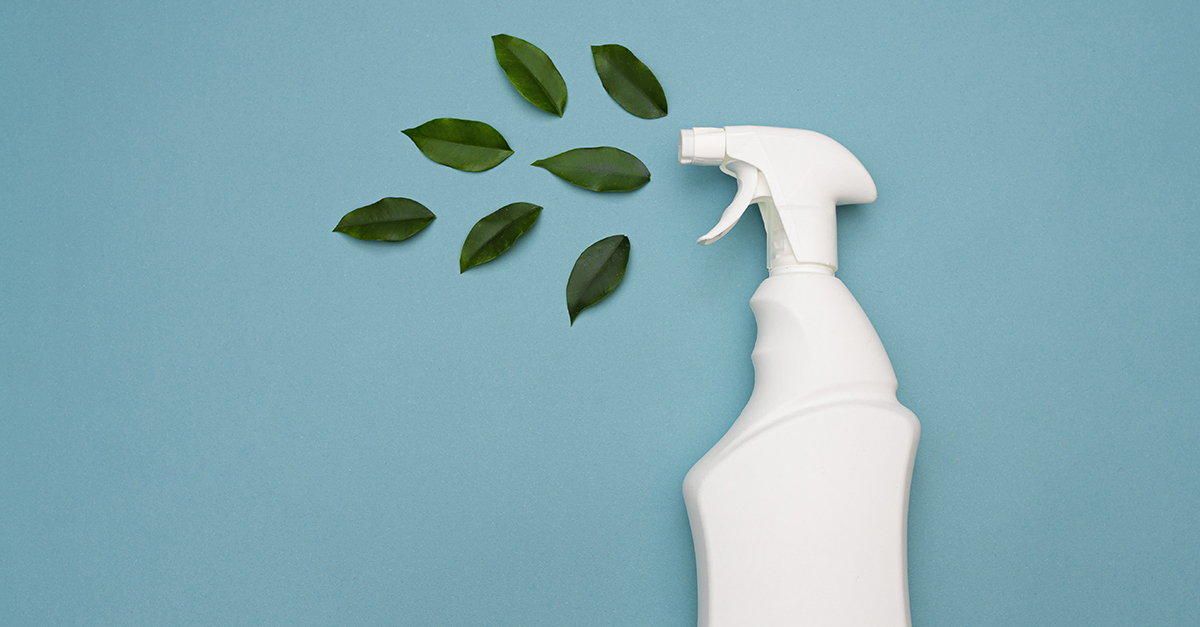Sustainability is a strong priority for forward-thinking businesses. A 2024 study by the IBM Institute for Business Value revealed that 75% of executives feel that sustainability drives better business results, and 76% agree that it is central to their business strategy. When prioritizing sustainability goals, your cleaning program should top the list. Greening your cleaning program can be a simple change, yet it yields significant environmental and human health benefits.
When creating a sustainability plan, a great place to start is your floor care routine. Facility floors require a lot of attention; their maintenance can lead to excess water and chemical use. Additionally, some floor care cleaning solutions can be harmful to people’s health. Incorporating an environmentally responsible floor care program not only protects the environment but will also help protect the health of cleaning workers and building patrons. Consider the following five steps when revamping your floor care routine.
1. Assess your current program
Before you create a new floor care plan, assess your current regimen. This will help identify where changes need to be made and can serve as a baseline to help track your sustainable cleaning
progress.
Review and take note of your facility’s floor care equipment, tools, and chemicals. Determine how frequently your staff cleans floors, how much water they are using each time, and how often
supplies are laundered or reused. Also record how much waste your facility is generating and if there is a recycling program in place.
The move toward sustainability doesn’t have to be an all-or-nothing initiative. You can implement slight changes over time, such as using less water and safer chemicals, to begin your transition
toward sustainability. What may seem like a small daily change can lead to a big environmental impact for a business.
2. Evaluate your cleaning chemicals
When was the last time you checked the ingredients and pH level of your floor care cleaning solutions? Many products on the market emit volatile organic compounds (VOCs), which pollute your indoor air and can cause adverse health effects. According to the American Lung Association, these effects include eye, nose, and throat irritation; headaches; nausea; and even long-term damage. It’s important to avoid products that emit harmful VOCs, especially acidic floor washes like those containing hydrochloric acid. The Agency for Toxic Substances and Disease Registry (ATSDR) lists many of these high-pH formulas as corrosive, caustic, and toxic. Fortunately, you don’t have to sacrifice cleaning effectiveness for health. Sustainable products can make your floors sparkle and effectively remove dust and allergens—without the harmful VOCs—helping everyone breathe easier.
When making the switch, research new products thoroughly. A 2023 study published in the journal Chemosphere revealed that many cleaning products—even some labeled green—
release hundreds of hazardous VOCs that may impact human health. Look for sustainable floor cleaners with a neutral pH. These are better for the environment and your indoor air quality
(IAQ) and won’t be harsh on your surfaces. More importantly, they are free of dangerous chemicals and VOCs.
To verify green products and avoid greenwashing tactics, look for ecolabels that indicate the products have been federally approved and meet sustainability guidelines from the U.S. Environmental Protection Agency (EPA). Third-party organizations, such as Green Seal, can also help you identify brands that have committed to producing sustainably made products while implementing environmentally friendly practices throughout the manufacturing process.
3. Incorporate sustainable cleaning tools
Cleaning tools can be sustainable too. Beyond just reusing them, it’s important to think about how your tools are manufactured and the materials from which they are made. Selecting tools made
from recycled materials is a fantastic way to repurpose waste that would otherwise pollute the environment. If you’re still using plastic brooms and brushes made from virgin raw materials, it’s
time to make the sustainable switch.
According to the Green Seal 2023 Impact Report, Green Seal-certified professional cleaning products save the equivalent of 1.7 billion 1-liter plastic bottles each year. These responsibly
manufactured options are made from recycled plastic bottles and caps, as well as from clothing scraps that would otherwise end up in a landfill. There are a variety of options available on
the market, including cotton cut-end mops, launderable loop-end mops, and dust mops that can provide optimal floor coverage while still meeting your sustainability goals.
Consider purchasing sustainable cleaning tools from a third party that provides innovative tools and is committed to social and environmental responsibility. Just as you do for cleaning chemicals, ensure that cleaning tools have the proper ecolabels and are certified by Green Seal.
4. Look for additional ways to reduce, reuse, and recycle
Always keep an eye out for unique ways that your organization can reduce its environmental footprint. It’s important to consider every step of the supply chain when developing your sustainable
floor care program. Look for suppliers that use recyclable packaging to help keep unnecessary waste out of landfills. Be sure to also assess your water usage and how often you need to clean floors.
Adhere to the fill lines on buckets and consider using premeasured cleaning solutions to ensure that employees don’t overpour and waste chemicals. For wet-mopping, consider upgrading
to dual-chamber mop buckets, as they require fewer trips to dispose of dirty water than single buckets. Furthermore, if you are still using single-chamber buckets, you are essentially spreading
bacteria, dirt, and debris around your facility. Upgrading is thus a win-win situation.
5. Train employees
When implementing new products and procedures, it is crucial that you properly train your cleaning staff. Doing so helps protect employees, ensures they complete tasks properly, and reinforces that these sustainable changes have been implemented to protect their health and safety.
Transitioning to an environmentally responsible floor care program can significantly improve your environmental impact while also providing a healthier indoor atmosphere. By following these five simple steps, you’ll have peace of mind that your organization is achieving its sustainability goals to help save the planet and provide a safe space for patrons.



